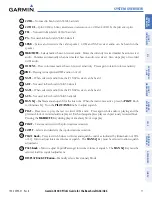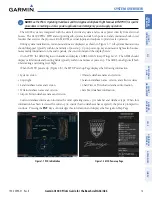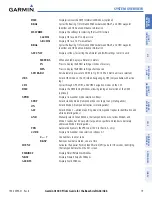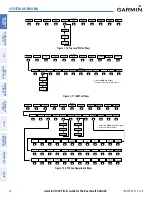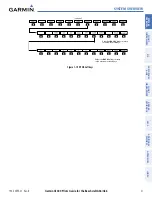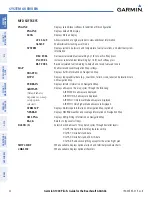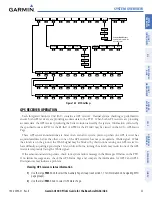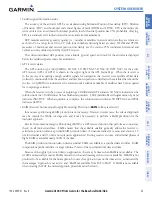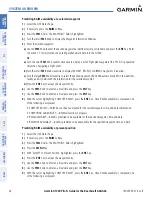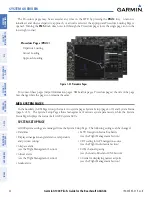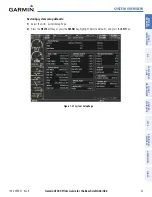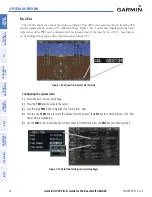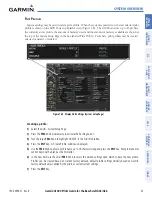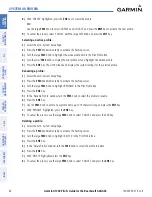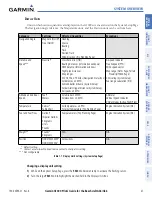
190-00595-01 Rev. B
Garmin G1000 Pilot’s Guide for the Beechcraft A36/G36
23
SYSTEM OVERVIEW
SY
STEM
O
VER
VIEW
FLIGHT
INSTRUMENTS
EIS
AUDIO P
ANEL
& cNS
FLIGHT
MANA
GEMENT
HAZARD
AV
OID
ANCE
AFCS
ADDITIONAL
FEA
TURES
APPENDICES
INDEX
Figure 1-20 MFD Softkeys
MAP
DCLTR
TOPO
BACK
TERRAIN
DCLTR-2
DCLTR-3
DCLTR-1
Select the
BACK
Softkey
on this level to return to the
top softkey level.
NEXRAD
XM LTNG
SHW CHRT
CHKLIST
AIRWAYS
AIRWY LO
AIRWAY HI
AIRWY ON
STRMSCP
TRAFFIC
(optional)
ENGINE
BACK
ENGINE
SYSTEM
BACK
ENGINE
SYSTEM
RST FUEL
DEC FUEL INC FUEL
LEAN
LEAN
BACK
ENGINE
SYSTEM
CYL SLCT
ASSIST
LEAN
GPS RECEIVER OPERATION
Each Integrated Avionics Unit (IAU) contains a GPS receiver. Internal system checking is performed to
ensure both GPS receivers are providing accurate data to the PFD. When both GPS receivers are providing
accurate data, the GPS receiver producing the better solution is used by the system. Information collected by
the specified receiver (GPS1 for the #1 IAU or GPS2 for the #2 IAU) may be viewed on the AUX - GPS Status
Page.
These GPS sensor annunciations are most often seen after system power-up when one GPS receiver has
acquired satellites before the other, or one of the GPS receivers has not yet acquired a WAAS signal. While
the aircraft is on the ground, the WAAS signal may be blocked by obstructions causing one GPS receiver to
have difficulty acquiring a good signal. Also, while airborne, turning the aircraft may result in one of the GPS
receivers temporarily losing the WAAS signal.
If the sensor annunciation persists, check for a system failure message in the Messages Window on the PFD.
If no failure message exists, check the GPS Status Page and compare the information for GPS1 and GPS2.
Discrepancies may indicate a problem.
Viewing GPS receiver status information
1)
Use the large
FMS
Knob to select the Auxiliary Page Group (see Section 1.7 for information on navigating MFD
page groups).
2)
Use the small
FMS
Knob to select GPS Status Page.



